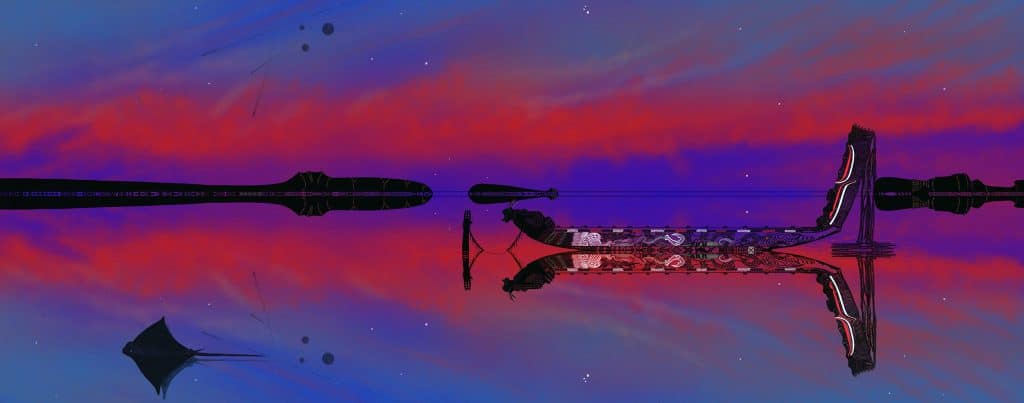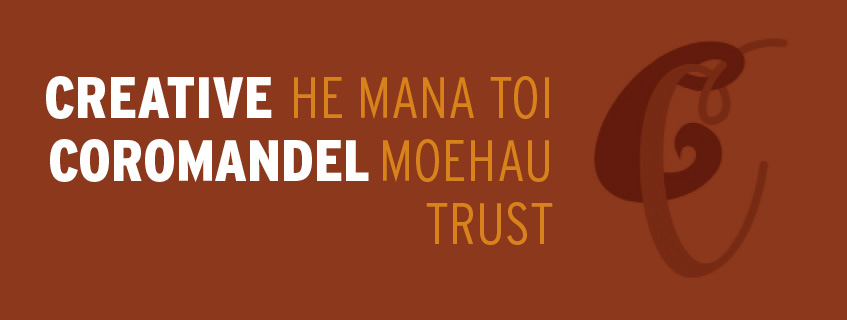by Isabell Gilbert Palmer
Some days later after our earlier conversation I visited Roi’s Matariki Art Show tucked away in a corner of Kuaotunu village. This was his first solo show with only his work on show and it gave plenty of time to wander, focus and compare his various styles and works.
Besides the framed pieces on walls, arranged across two tables there were wooden items and stones, some raw, some fully formed, a smooth patu or two, some works in progress, stylised carvings, a mask, small bunches of dried fibre. The space had been purposely transformed into a gallery, beginning with a semi-circular screen which quietly ushered one into an intimate space, encouraging a welcoming and relaxed exhibition experience.
The way the show was presented gave a lot of attention to the aesthetics and atmosphere of the overall presentation, and made the viewing experience for visitors and the artist equally meaningful. There is much to say about the value of carefully curated shows of good art in small spaces, and a lot more to say about the richness of the creative life present in the Kuaotunu community – those who make art and those who support it. The show was devoted to the last few years of Roimata’s work, what he likes to do, is guided to do, and what exists in his portfolio. Certainly there were some surprises for those who felt they knew his work.
Squeezed in amongst his visitors we snatched a moment here and there to continue on with the conversation we had had begun days before. His magnetic and compelling story-telling when asked to share what his work represented and the attentiveness and sensitivity he showed to viewers interpretations of in his work was exactly what he had described days before, the conversations he enjoyed with visitors (and of course lots of red stickering happened continually over the weekend).
On one table was a carved piece lent by carver Paul Bayliss, a member of a carving collective Roi began in his home wood work studio with David Ting and a group which meets every Sunday to work and experiment together.
It might be said that Roi’s work shows how a contemporary artist can reach back into the past and bring along with him the evolution of figurative art, artefacts, forms from primordial times.
Respectful of the spirit of natural materials, stone and wood and fundamental tools, he is using them to explore another practice while at at another time he chooses to work with the medium which laid the foundation of his practice – with paper, pen and ink.
Today’s technology and digital devices now beckon him into a new world of experimentation which charms him into the unknown reaches of the future and which he describes as “daunting and exciting” for a creative.
It might also be said that his varied practices show us the discovery and inspiration of his own personal unfolding and becoming of himself fully, as an artist.
The Matariki Art Show shone on all counts and we can’t wait to see what comes next.
Over the three day exhibition there was a big flow of viewers and buyers, it was full of sheer strength and a big success. And if you didn’t make it this time around, be sure to visit the next show when it comes, as it surely will.





